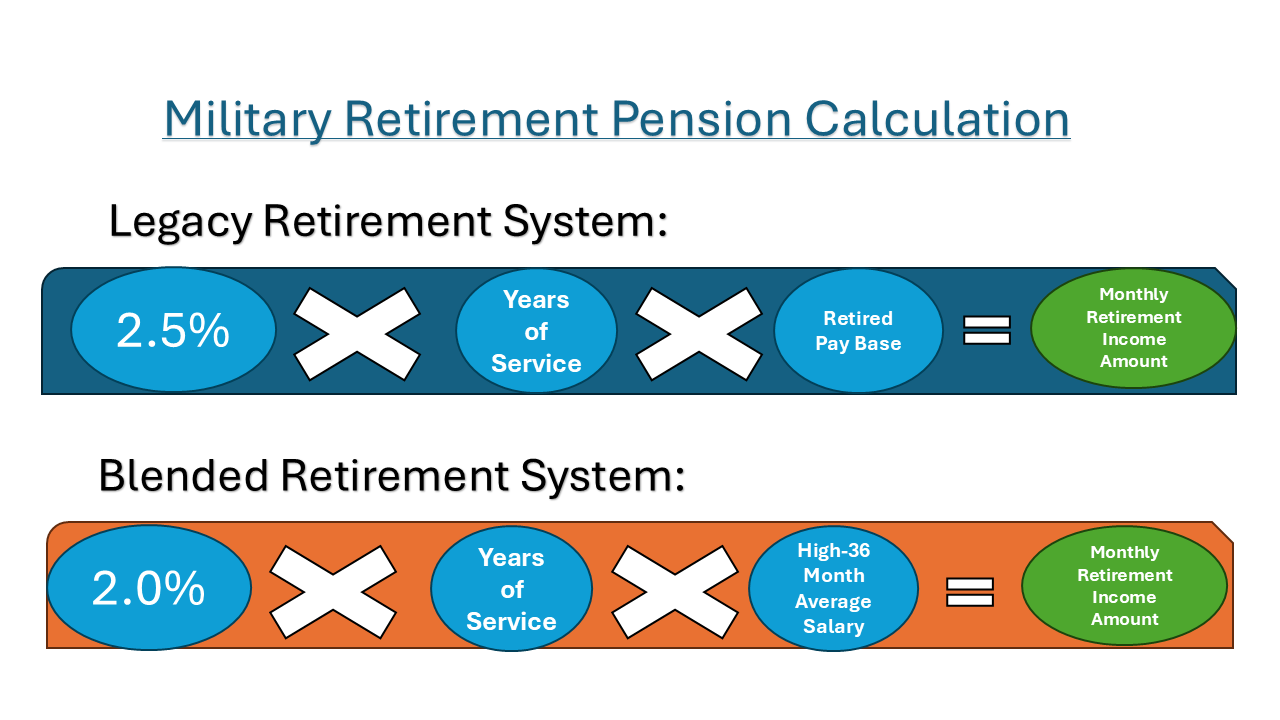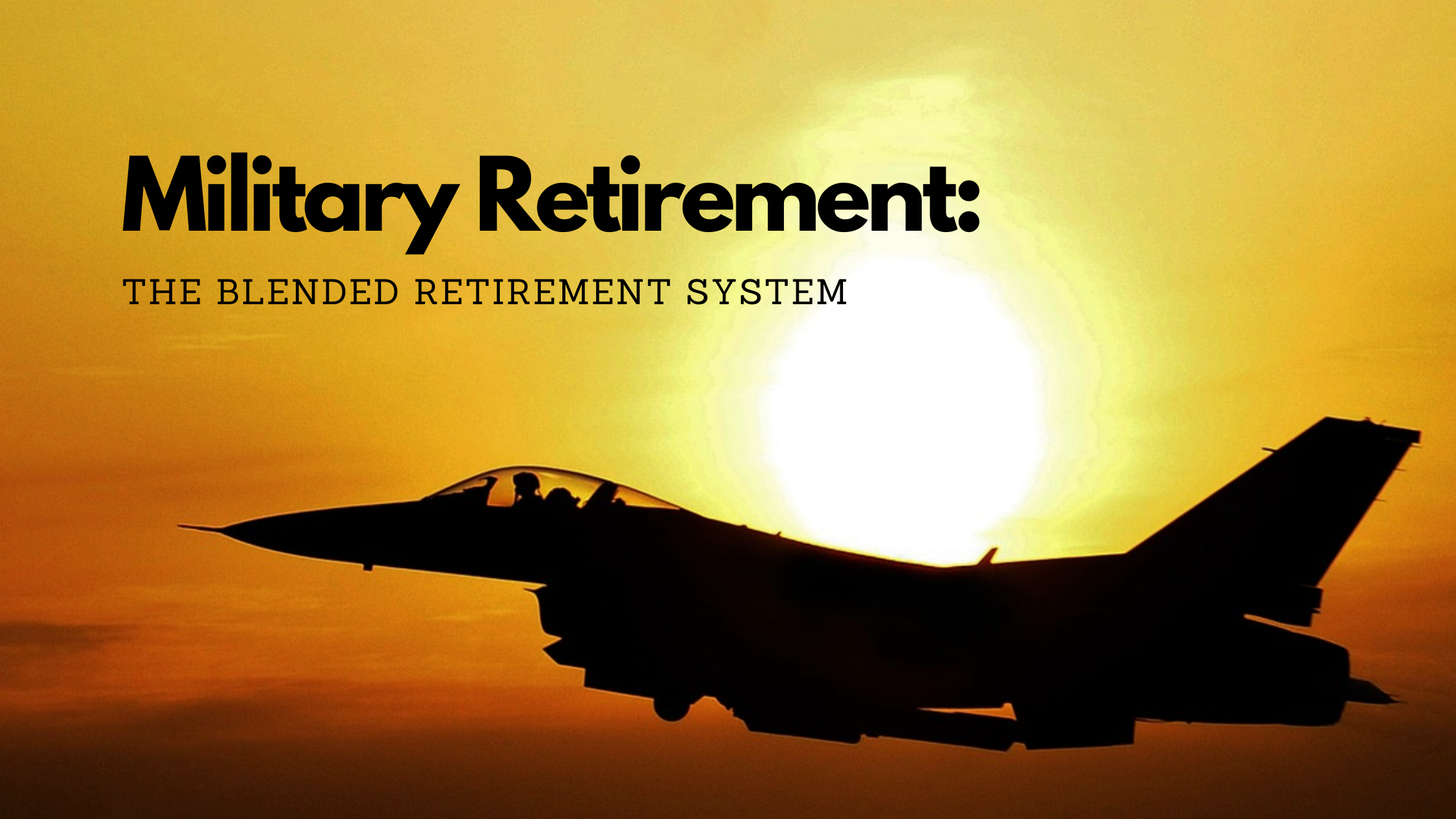Explaining Military Retirement and the Blended Retirement System (BRS) for Air Force, Navy, and Army service members. Learn about retirement options, Thrift Savings Plan, and continuation pay.
Explaining the New Blended Retirement System for Military Forces
The introduction of the Blended Retirement System (BRS) in 2017 marked a significant shift in how military forces, including the Army, Navy, and Air Force, approach retirement planning. Designed to modernize and enhance the existing military retirement system, the aim of the BRS is to provide a more flexible and comprehensive retirement plan for service members. This newer system blends traditional pension benefits with defined contribution plans, offering a more diversified approach to retirement savings. For more in-depth coverage, see our comprehensive guide to the Blended Retirement System for US Military.
What is the Blended Retirement System (BRS) and How Does it Work?
Understanding the Basics of the Military Retirement Pay
The Blended Retirement System combines elements of the traditional pension system with a defined contribution plan, the Thrift Savings Plan (TSP). This blend allows service members to benefit from both a steady retirement income and the potential growth of investments. The BRS is designed to be more inclusive, providing retirement benefits to those with less than 20 years of service, which was not the case under the previous system.
How Does the BRS Differ from the Legacy Retirement System?
The primary difference between the BRS and the legacy retirement system lies in the structure of benefits. The legacy system offered a pension only to those who completed 20 years of military service, whereas the BRS provides benefits to a broader range of service members. Under the BRS, service members receive a portion of their retirement benefits through the TSP, which includes government matching contributions.
Need help planning your retirement? Meet with Us.
What are the Key Components of the Blended Retirement System?
The Blended Retirement System consists of several key components: the defined benefit, the defined contribution through the TSP, continuation pay, and the option for a lump sum payment. The defined benefit is a traditional pension based on years of service and base pay. The TSP component allows service members to contribute a portion of their base pay, with matching contributions from the government. Continuation pay is a mid-career bonus offered to those who commit to additional years of service. Lastly, the lump sum option provides flexibility in how retirement benefits are received.
Eligibility and How to Calculate Military Retirement Benefits
For the military pension in both systems, eligibility is attained at age 60 (or older) with at least 20 years of qualified service. Here is the calculation for military retired pay benefits for the defined contribution plan, showing both the old system (which has no TSP component) and the new blended system.

When the BRS was enacted in 2018, members of the military were allowed to opt in. (For the national guard and reserve members, 4320 retirement points were required to remain in that plan and receive a 2.5% multiplier. Learn more about reserve retirement calculation.) However, only those covered by the blended retirement plans are eligible for TSP participation, to receive continuation pay, and the option to receive a lump-sum upon retiring from military service.
For more information on calculating the high-36 month average salary, check out this article about Federal Retirement High-3 calculations.
How Does the Thrift Savings Plan (TSP) Integrate with the BRS?
One of the most significant advantages of the BRS is its inclusivity for service members with less than 20 years of service. Under the legacy system, these individuals would not qualify for any retirement benefits. However, the BRS allows them to accumulate retirement savings through the TSP, with government matching contributions enhancing their retirement fund. This change provides a safety net for those who do not reach full retirement age in the military, ensuring they still have a portion of their retirement benefits secured.
Knowledge is Confidence!
The Thrift Savings Plan plays a crucial role in the new Blended Retirement System by serving as the defined contribution component. It allows service members to invest a portion of their base pay into a retirement savings account, similar to a 401(k) plan. The government matches contributions up to a certain percentage, which offers significant benefits, as it effectively increases the amount of money being saved for retirement without additional cost to the service member. This matching contribution can lead to substantial growth over time, especially when combined with compound interest. The matching funds are vested after two years of service, providing an incentive for service members to remain in the military and continue contributing to their retirement savings.
Here is a chart that shows how the government match works for military personnel:
| Individual Contribution | Agency Auto-Contribution (vested after 60 days of service) | Agency Matching Contributions (vested after 2 years of service) | Total TSP Contribution (Monthly) |
| 0% | 1% | 0% | 1% |
| 1% | 1% | 1% | 3% |
| 2% | 1% | 2% | 5% |
| 3% | 1% | 3% | 7% |
| 4% | 1% | 3.5% | 8.5% |
| 5% | 1% | 4% | 10% |
Estimate your retirement income, try our TSP Calculator. Learn more about boosting contributions by exploring TSP Matching Explained.
Mid-Career Bonus: Continuation Incentive
Continuation pay is a unique feature of the BRS, designed to incentivize service members to continue their military careers. It is a one-time bonus offered to those who have completed at least 8, but no more than 12, years of service and by also agreeing to commit to 4 more years of military service. The amount of continuation pay varies based on service branch and individual circumstances, but it can be a significant financial boost. This pay is intended to retain experienced personnel and provide additional financial resources for mid-career service members. Active military in most branches can get 2x to 13x their monthly pay as one-time bonus. Those in Reserve or National Guard may receive 0.5x to 6 times their base monthly amount.
Understanding the Annuity and Lump Sum Options
The BRS offers flexibility in how retirement benefits are received, with options for full annuity payments or a discounted lump sum at retirement in exchange for reduced benefits until they reach age 67, at which point the monthly pension amount will revert to the full amount. If elected, the lump sum option means receiving reduced pension payments (by either 25% or 50%) until age 67. The future retirement pay that is given up is estimated (because future cost-of-living adjustments are an unknown variable) and then that estimation of benefits is then subtracted by the annual discount rate.
Annual Lump Sum Discount Rate (LSDR)
| 2024 LSDR | 6.26% |
| 2025 LSDR | 6.33% |
As a simplified example that doesn’t take COLAs into account, let’s say a retired military member is to receive $1000 monthly benefits and retires on their 60th birthday in 2025. If they take the lump sum and select 50%, then their pension amount is cut to $500/month for 7 years, giving up $500/mo. in that time for a total of $42,000. Their lump sum would therefore equal $42,000 minus the LSDR (6.33% of $42,000 = $2659) leaving them a one-time payment of $39,341 upon retirement. (Again, this does not take annual COLAs into account but illustrates how the lump sum works.)
The lump sum payment offers immediate access to a portion of retirement benefits, which can be useful for large expenses or investments, but can also have tax consequences. Service members should carefully consider their financial goals and consult with a financial advisor for federal employees to determine the best option for their situation. Schedule an initial consultation now.
What are the Challenges and Considerations of the New BRS?
What are the Potential Drawbacks of the Blended Retirement System?
While the BRS offers many benefits, there are potential drawbacks to consider. The reduced pension component compared to the legacy system may result in lower guaranteed income for those who reach full retirement age. Additionally, the reliance on TSP contributions requires service members to actively manage their investments, which may be challenging for those unfamiliar with financial planning. The BRS also requires careful consideration of career length and retirement goals to ensure optimal benefits.
What Should Service Members Consider Before Opting for the BRS?
Before opting for the BRS, service members should carefully evaluate their career plans, financial goals, and retirement needs. Factors such as expected length of service, desired retirement income, and investment knowledge should be considered. Consulting with a financial advisor can provide valuable insights and help service members make informed decisions about their retirement planning. Understanding the full scope of the BRS and its implications is essential for maximizing retirement benefits and ensuring financial security.
Reach Out to Us!
If you have additional federal benefit questions, contact our team of CERTIFIED FINANCIAL PLANNER™ (CFP®), Chartered Federal Employee Benefits Consultants (ChFEBC℠), and Accredited Investment Fiduciaries (AIF®). At PlanWell, we are federal employee financial advisors with a focus on retirement planning. Learn more about our process designed for the career fed.
Preparing for federal retirement? Check out our scheduled federal retirement workshops. Sign up for our no-cost federal retirement webinars here! Make sure to plan ahead and reserve your seat for our FERS webinar, held every three weeks. Want to have PlanWell host a federal retirement seminar for your agency? Reach out, and we’ll collaborate with HR to arrange an on-site FERS seminar.
Want to fast-track your federal retirement plan? Skip the FERS webinar and start a one-on-one conversation with a ChFEBC today. You can schedule a one-on-one meeting using our online form.










